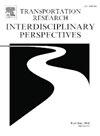种族和阶级的交集:社区社会经济地位和致命的行人和自行车碰撞的种族/民族
IF 3.8
Q2 TRANSPORTATION
Transportation Research Interdisciplinary Perspectives
Pub Date : 2025-02-14
DOI:10.1016/j.trip.2025.101357
引用次数: 0
摘要
交通安全研究对按种族/族裔划分的自行车和行人致命碰撞的可能性给予了相当大的兴趣。人们还不太清楚这些种族差异是如何因社区社会经济地位(SES)而有所不同的。利用来自多个来源的数据,包括加州全州综合交通记录系统(SWITRS),我们分析了社区SES如何影响加州各地种族/民族的碰撞结果。使用广义线性混合模型,我们发现高SES社区通常具有较低的致命碰撞率,特别有利于白人骑自行车者和行人。然而,黑人和西班牙裔没有经历同样的致命碰撞的机会下降,突出了持续的种族/民族差异。我们的研究结果强调需要有针对性的干预措施来解决这些差异,包括公平的基础设施投资,针对高危人群的道路安全计划,以及驾驶员教育,以减少对少数民族道路使用者的攻击行为。政策制定者应优先考虑满足所有社区需求的包容性基础设施,特别是那些种族/少数民族比例较高的社区。本文章由计算机程序翻译,如有差异,请以英文原文为准。
The intersection of race and class: Neighborhood socio-economic status and fatal pedestrian and bicycle collisions by race/ethnicity
Transit safety research has paid considerable interest to the likelihood of fatal bicycle and pedestrian collisions by race/ethnicity. Not as well understood is how these racial disparities may differ by neighborhood socioeconomic status (SES). Utilizing data from multiple sources, including the California Statewide Integrated Traffic Records System (SWITRS), we analyze how neighborhood SES influences collision outcomes by race/ethnicity across California. Using generalized linear mixed models, we find that higher SES neighborhoods generally have lower rates of fatal collisions, particularly benefiting White cyclists and pedestrians. However, Black and Hispanic individuals do not experience the same decline in the chance of fatal collisions, highlighting ongoing racial/ethnic disparities. Our results emphasize the need for targeted interventions to address these disparities, including equitable infrastructure investments, road safety programs tailored to at-risk populations, and driver education to reduce aggressive behaviors towards minority road users. Policymakers should prioritize inclusive infrastructure that meets the needs of all communities, particularly those with higher proportions of racial/ethnic minorities.
求助全文
通过发布文献求助,成功后即可免费获取论文全文。
去求助
来源期刊

Transportation Research Interdisciplinary Perspectives
Engineering-Automotive Engineering
CiteScore
12.90
自引率
0.00%
发文量
185
审稿时长
22 weeks
 求助内容:
求助内容: 应助结果提醒方式:
应助结果提醒方式:


